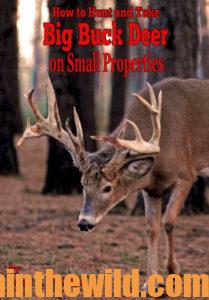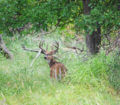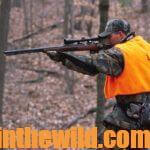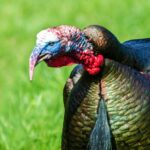Editor’s Note: Successful deer hunting involves problem solving and decision making. But to consistently succeed, you must know when to change strategies and why to abandon a hunt plan and have the flexibility to institute those changes. That’s what the deer-hunting pros do. Weather, hunting pressure, the availability of food, the rut and your intuition all determine how, when and where you should hunt.
 Any time I hunt a new piece of property I usually stalk-hunt as I scout. I like to stalk along woods roads after a rain, on the edges of creeks and sloughs or in flooded timber where I can wade and not leave any scent or make any sound. By stalking, I can cover a large region. Too, I may find an abundance of droppings and signs of the deer feeding at a food source. Then I can follow the trail back to a thick-cover area. Probably this region will be a bedding site. I can use a man-drive to drive the deer out of the thick cover where I can get a shot at them during daylight hours.
Any time I hunt a new piece of property I usually stalk-hunt as I scout. I like to stalk along woods roads after a rain, on the edges of creeks and sloughs or in flooded timber where I can wade and not leave any scent or make any sound. By stalking, I can cover a large region. Too, I may find an abundance of droppings and signs of the deer feeding at a food source. Then I can follow the trail back to a thick-cover area. Probably this region will be a bedding site. I can use a man-drive to drive the deer out of the thick cover where I can get a shot at them during daylight hours.
 If you’ve taken a stand in a high-pressure region and seen few or no deer, determine to hunt that region by stalking on a rainy day. Deer pattern hunters as hunters will pattern deer. Deer in high-pressure places learn quickly that often they’ll have the least amount of hunting pressure on rainy days. Therefore, they’ll often move and feed in open spots when rain pours from the sky.
If you’ve taken a stand in a high-pressure region and seen few or no deer, determine to hunt that region by stalking on a rainy day. Deer pattern hunters as hunters will pattern deer. Deer in high-pressure places learn quickly that often they’ll have the least amount of hunting pressure on rainy days. Therefore, they’ll often move and feed in open spots when rain pours from the sky.
 When you’re hunting an area – especially a public-hunting site – and most of the hunters stalk-hunt there, then locate a thick-cover region where you can see only 20 or 30 yards. Put-up a tree stand. Determine to stay in that thick cover from before daylight until after dark. Since the other hunters stalk in the open areas, they’ll force the deer to the thick-cover spots. When you take a stand, you’ll see more deer and have a better chance of getting a shot than the hunters moving in the open places.
When you’re hunting an area – especially a public-hunting site – and most of the hunters stalk-hunt there, then locate a thick-cover region where you can see only 20 or 30 yards. Put-up a tree stand. Determine to stay in that thick cover from before daylight until after dark. Since the other hunters stalk in the open areas, they’ll force the deer to the thick-cover spots. When you take a stand, you’ll see more deer and have a better chance of getting a shot than the hunters moving in the open places.
No matter which tactic you employ, hunt from 10:30 am to 2:30 pm for the most deer-hunting success. Because hunter movement affects deer, the bucks soon learn they must move out of thick cover and feed either at night or in the middle of the day when most hunters have left the woods to eat lunch. If you forego a lunch break and instead stalk- or still-hunt in the middle of the day, you’ll dramatically increase your odds of bagging an older-age-class buck any day you hunt.
To take more bucks this season, hunt like a pro by learning to let weather conditions, hunting pressure and the feeding, rutting, and bedding patterns of the deer dictate what style of hunting you’ll use on any day you hunt. By becoming a more-versatile deer hunter, you’ll find and take more bucks each season.

 To learn more about deer hunting, go to John E. Phillips’ books and learn the tactics small property owners have used successfully by checking out John E. Phillips’s book, “How to Hunt and Take Big Buck Deer on Small Properties” at https://www.amazon.com/dp/B00OOC2T0Y#, available in Kindle, print and Audible versions. To receive your free book on “How to Make Venison Jerky,” go to https://www.emailmeform.com/builder/form/Ece3UZVcOo52cKPJcL.
To learn more about deer hunting, go to John E. Phillips’ books and learn the tactics small property owners have used successfully by checking out John E. Phillips’s book, “How to Hunt and Take Big Buck Deer on Small Properties” at https://www.amazon.com/dp/B00OOC2T0Y#, available in Kindle, print and Audible versions. To receive your free book on “How to Make Venison Jerky,” go to https://www.emailmeform.com/builder/form/Ece3UZVcOo52cKPJcL.










